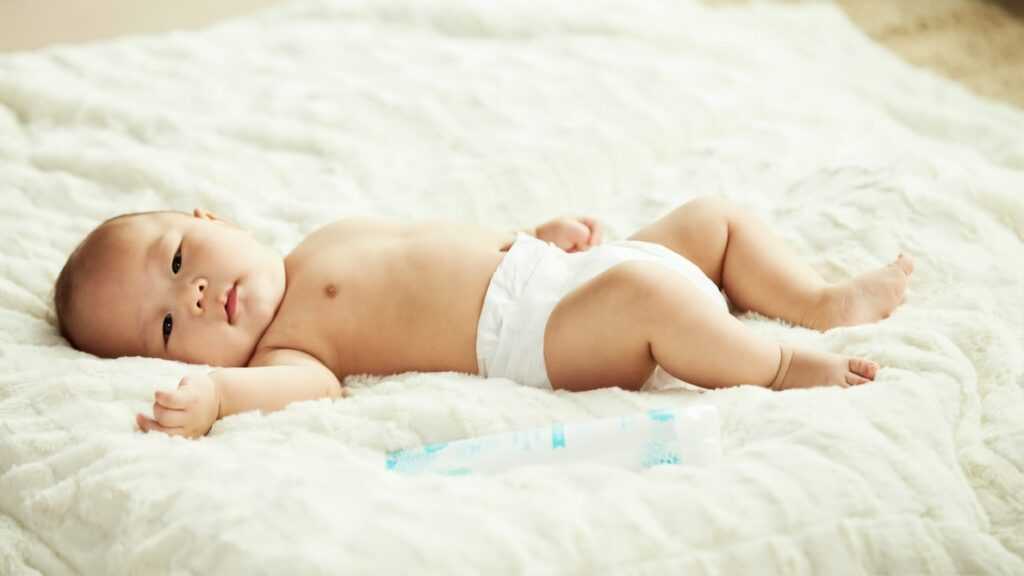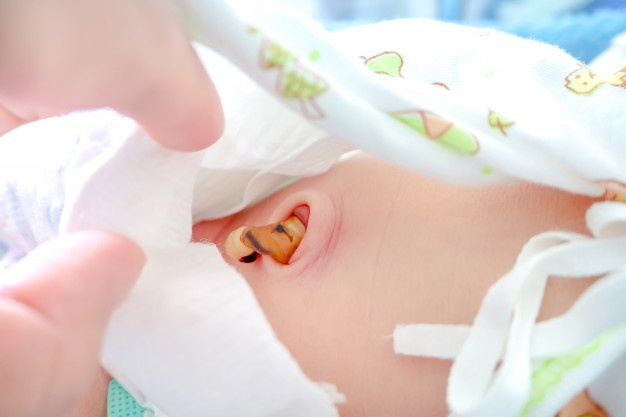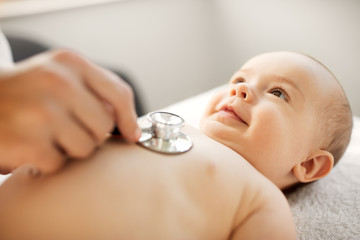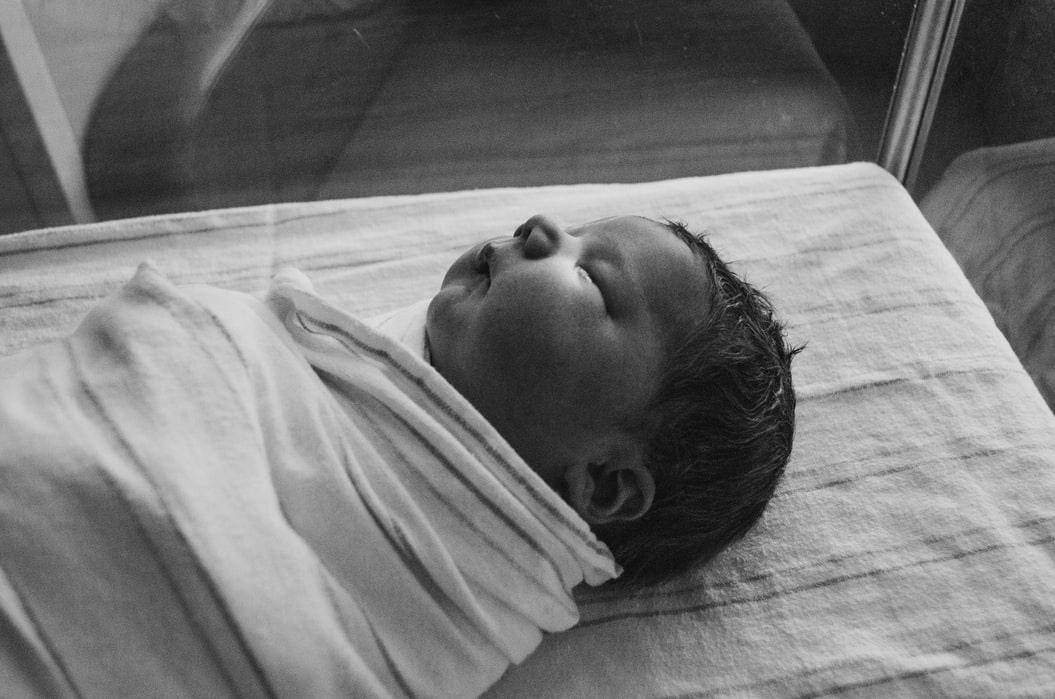Let me begin by recalling the important features of the “care” taken immediately after the baby is born. Here’s what you should know about taking care of the newborn.
The aim of care at birth is that the baby’s basic needs i.e., establishing breathing, adequate nutrition, body temperature and avoiding contact with infection are met. Also, it will be important to help him in adjusting to the new life outside the mother’s womb.
As soon as he is born, the doctor or the midwife, suspends him by the feet (head downward) to drain blood and fluid from his nose, mouth and stomach. The 1-minute Apgar score is taken.
Before cutting the cord, it is made certain that it had stopped pulsating. Then, the operator milks it towards the infant. In this way the infant gets about 100 ml of additional blood. This will stand him in good stead afterwards. It is advisable to make a note of the blood vessels in the cord. A single artery is usually associated with some congenital malformations.
Having made a careful survey of the newborn’s body for any congenital defect, the doctor records the 5-minute Apgar score. If the mother is conscious, it will be a good idea to let her handle the baby at this stage. She may also feel like putting him to the breast. Most authorities, as a matter of fact, encourage such an attitude. There is a good deal of evidence that such a policy goes a long way in establishing a healthy mother-child relationship and successful breastfeeding.
The right place to sleep

Though there is no hard and fast rule, it is a distinct advantage to place the baby in a pre-warmed cot to sleep. This cot should be kept by the mother’s bedside so that she can cuddle, fondle and feed him as and when needed. Watching the baby sleep and awake gives her immense contentment. Experience has demonstrated that if the mother and the baby share the same bed, accidental deaths (by way of the baby getting suffocated under the weight of the sleeping mother) may occur. The nursery in the obstetric unit of a hospital is not the right place for a healthy newborn. It is meant for the sick, the low birthweight and pre-term babies.
Bathing the baby: when and how?

In the good old days it was virtually a “ritual” to bathe the newborn immediately after birth, almost always within the first two hours. Today, we know that it is of advantage not to bathe a newborn during the first week. For once, it helps to keep infection at an arm’s length. In fact, the number of maternity units where no bath is given until the baby is past seven days has been on the increase.
What I am trying to say is that “dip bath” should be avoided until the cord sheds off. That, however, should not be interpreted as meaning that the newborn should not be cleaned or sponged. The fact is that the baby has got to be kept clean by sponging gently. Special attention should be paid to the diaper area and the creases. You should, however, take a precaution not to rub off the protective cheeselike covering on his skin, the vernix caseosa.
Once the cord has separated, you may begin to give him a “dip bath” every day. Make sure that you do not use a soap containing hexachlorophene which is said to be absorbed through the baby’s skin and to be toxic to the nervous system.
How should the baby be bathed? This is an oft-asked question by inexperienced mothers.
A colourful baby bathtub or a basin makes an excellent equipment to bathe the newborn. Before making a start, make sure that you have around the corner everything that you will need while giving him a bath. Also see that the water in the mini-tub or the basin is just lukewarm. Remember it should be “elbow-warm” and not “handwarm.” The latter will be too hot to be tolerated by the delicate baby. Also, make sure that the room in which you propose to give the baby a bath is warm enough and free from excessive air or wind. Remove wristwatch, rings or jewellery around your wrist or forearm.
Now sit before the bathtub of comfortably warm water and either spread a towel over your lap or wear an apron. Hold the undressed baby, giving the head a little dip. Apply a small quantity of a baby shampoo to the scalp. Rub it well. Then rinse off. Dry the head gently with a towel. Make sure that you do not press the fontanellae too hard and that you do not let soapy cloth touch the eyes. Use a fresh swab of cotton wool for wiping each eye. With separate swabs clean areas around nose, ears and folds at the surface of ears. Do not poke bits of cotton within the ears or nostrils.
Now is the time to soap the baby all over with your hand, allowing the head to rest on your forearm. As soon as you lower him gently into the water, the soap will wash off. You may rub his skin or splash water over him. Do not worry when he kicks in the water.
You may now lift him up and dry his body with a clean towel.
Next, powder his body, not directly but by first rubbing it on your hand. Mind you, if breathed into the baby’s nostrils, the powder can prove harmful. Also, even the best of baby powders can cause discomfort by collecting in skin creases, especially in summer.
The stage is all set now to dress up our “little friend”. Put on the nappy first and then the plastic pants. In Chapter 8 are given details about nappies.
Now, you may slip over the vest followed by the top clothes.
Oil Massage

It is a good idea to give the baby a gentle massage with olive oil, coconut oil or mustard oil before giving him bath. You may use a standard baby oil. Oil massage stimulates circulation helping to keep the baby’s skin healthy and soft. Besides, it is very satisfying for the grannies whose faith in this age old practice continues to be remarkable. Nevertheless, remember, it should never be vigorous. Vigorous massage not only cause discomfort to the baby but also runs the risk of inflicting unintentional injury.
Clothing

Remember, the newborn has got to be kept rather warm, but not too warm. His garments should not make him sweat. Unfortunately, overclothing is practised far too frequently, covering the baby with layers and layers of woollies even in good weather. That is undesirable. Such babies do not feel well, feel drowsy and show failure to thrive, develop constipation and prickly heat rash.
Also avoid woollies touching the neck of the baby. An annoying rash may result. During summer, all that may suffice for the baby is a vest and a nappy.
Care of the umbilical stump

As was pointed out earlier, the umbilical stump after the birth of the baby is usually touched with an antibacterial agent and sometimes dressed by the attending doctor in the labour room per se.
As a rule the stump will fall off in a week’s time provided it is left as such and neither made wet by a bath nor pulled out.
At times, pus or a watery discharge may ooze out from the umbilicus. Sometimes you may find, when the baby is two or three week old, a pea-size mass buried in it. This is called polyp or granulation. A doctor’s opinion should be sought in such a situation. Remember, a septic umbilicus can spread infection to the rest of the body. The disease thus produced, septicaemia, is serious and can prove fatal.
Bad hygiene and neglect of the umbilicus can lead to another killing disease – tetanus. It is almost always seen in babies delivered and cared for in traditional ways and means. Mind you, one cause of tetanus in the newborn is the application of dust, cowdung or traditional pastes.
Care of the nose
It is important to keep the nose clean. Else, a blocked nose may cause undue crying and breathing difficulty. Avoid poking cotton wool plugs into the nose. Not infrequently I have seen little babies brought for “crying to death” and a peep into the nostrils reveals a tiny cotton piece plugging the air passage. So, remember, good “mothering” also includes attention to such small things.
Care of the eyes and ears
The ears and eyes should be cleaned at every bath as mentioned earlier in this chapter.
Do not get into the habit of pouring warm oil into his ear canals. You will only be boosting accumulation of more wax rather than getting rid of it.
Also, when you clean his eyes, see that you move the cotton swab or the edge of the towel from the corner, close to the nose towards the outer side. Do not put kajal or surma in his eyes.
Care of the fingernails
You need to attend to your baby’s fingernails as carefully as yours. Keep them short; they may require cutting every three or four days. Else he may have ulcers in his mouth and sores over the skin.
When to take him outdoors
Recently, I overheard the mother of an overprotected two-monthold, priding in telling a host of women, “It’s the first time I have exposed him to the world outside our cosy room.” That is a wrong attitude.
You should begin to put your baby, once he is a week old, outdoors for an hour or two everyday provided that the weather is conducive. Dress him adequately – neither too much nor too little. Just that he is going to stay out for his daytime nap(s) is not a good reason to wrap him with too many clothes.
In order that he gets used to the sun, do expose him to sunlight. Avoid the glare of the sun falling on his eyes however.
Paediatric check-up

Do not wait for a medical problem to knock but have him examined by a specialist. Look up the doctor for his first paediatric check-up when he is one month old. During the first year of life, it is advisable to have him regularly checked every month or so. Put your difficulties and queries over to the doctor.
Care of the skin
Much of what I would like to say here has already been said. So, let me be a little choosy.
I had stressed the need for a daily bath. On hot days, it may become necessary to have an additional bath in the afternoon.
After giving the bath, see that you do not rub his delicate skin with a towel. Rather, pat it with a soft towel.
Do not leave the baby for any length of time, “cooling his heels”, with a soiled or wet nappy. Else he may develop what is known as
nappy rash.
Also, do not rub the stool off his buttocks while changing the nappy. Instead, use cotton wool dipped in olive oil or wash his bottom with warm water.
Play
Once the baby is a week or two old, he should be put in a pram after his morning feed or afterwards. The mother should find time to play with him. Even newborns enjoy playing.
If you are going to keep him in the pram in the greenery of your lawn, make sure you have him protected from mosquitoes and other insects. A mosquito net may be required.
Sleep
As I said earlier the newborn sleeps nearly all through day and night but for the feeding periods. It is estimated that he sleeps for almost 22 hours a day.
There is nothing wrong in this sleep pattern. In fact the time-honoured belief that “children grow in their sleep” is well founded. When the ligaments are relaxed during sleep, the chance of growth in length increases.
Mothers and elders in the family often feel disturbed when the baby sleeps for long hours. Remember, it is normal for a newborn and a little older infant to sleep on his abdomen. In fact, it is safer and more comfortable for the baby. You may well encourage him to do so.
As pointed out at the outset of this chapter, you should let your newborn sleep in a baby cot or crib by your bedside rather than have him share your bed. There are several types of cradles available in the market. You may buy a collapsible one. It is fairly economical. Also, since it is folding, no space problem is posed. It would keep serving your baby for some two or three years.
Using the thermometer
Forget the “rectal temperature”. The procedure is risky and, unless you are an expert it may hurt the rectum, the lowermost end of the gut that opens into the anus.
Also forget the “mouth temperature” when it concerns the newborn or a little older baby.
The armpit (axilla) or the groin is the right place for you to record a baby’s temperature. What is highly important is to remember to keep the thermometer in place for at least three minutes. The so-called “half minute” and instant thermometers are misnomers.
Vaccination

We shall discuss the subject of protection against infections through immunisation (vaccination) at length in Chapter 16.
BCG vaccination has come under a cloud following the much publicised Chingleput study. A National Workshop held under the aegis of the Indian Academy of Paediatrics, however, has recommended its continuation. The workshop has called for concerted research to evaluate whether BCG gives protection against childhood tuberculosis or not.
You, as the mother of the “little one”, should not do anything just because the press has said so. You must get your child the BCG vaccination as soon as possible after birth. There is plenty of evidence that it protects, and absolutely none, that it does not, as far as children are concerned. Mind you, the much-talked-about Chingleput study concerned the adults. Children are not the same as adults.




